
Health
18:00, 08-May-2018
International Thalassemia Day 2018: Things you need to know
By Jiang Jiao
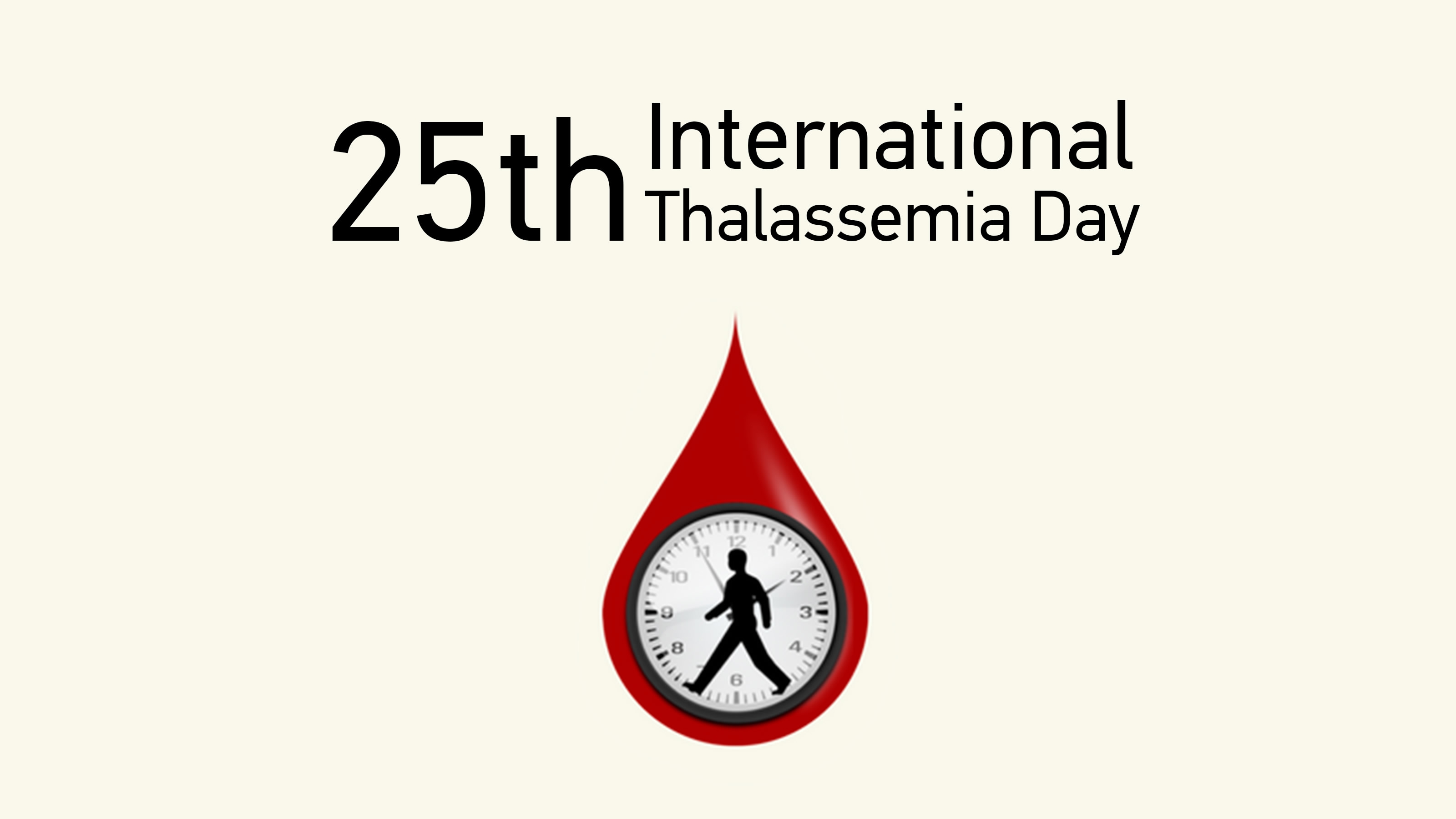
This Tuesday marks the 25th International Thalassemia Day (ITD), a day for people suffering from thalassemia and their families, struggling to live while confronted with an incurable disease, and the scientists who are dedicated to finding ways for them to live better and longer lives.
Although the disease has been assigned to a specific date, many healthy people may know little about it. Here is some basic information on the topic.
What is thalassemia?
In general, it refers to inherited blood disorders characterized by abnormal hemoglobin.
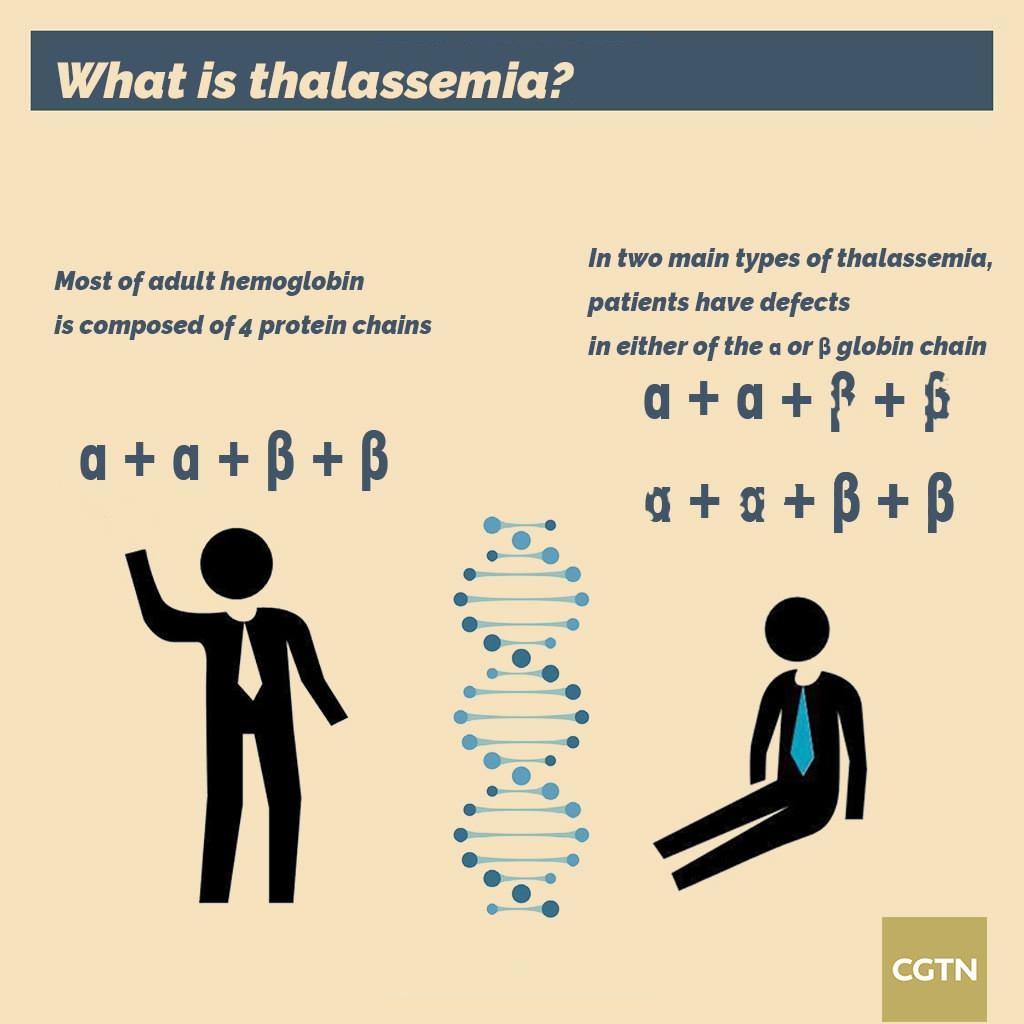
CGTN Infographic
CGTN Infographic
Other than the two main types, there are also delta-thalassemia, which is only different in regard to the mutation part – a delta globin chain instead of a beta chain, because about three percent adult hemoglobin is made of alpha and delta chains, and combination hemoglobinopathies.
What are the symptoms?
On one hand, few healthy red cells in the blood make patients look pale; on the other hand, frequent blood transfusions leave an overload of iron in their bodies, which is harmful to many organs and body systems.

CGTN Infographic
CGTN Infographic
Where are the highest concentration areas?
To some, a more familiar name of thalassemia is “Mediterranean anemia,” with the “Mediterranean” indicating one of the areas where it is diagnosed the most.
People in the vicinity of the Mediterranean also have high rates of thalassemia, including those from West Asia and North Africa.
Additionally, South Asians and other people of Mediterranean origin are also affected.
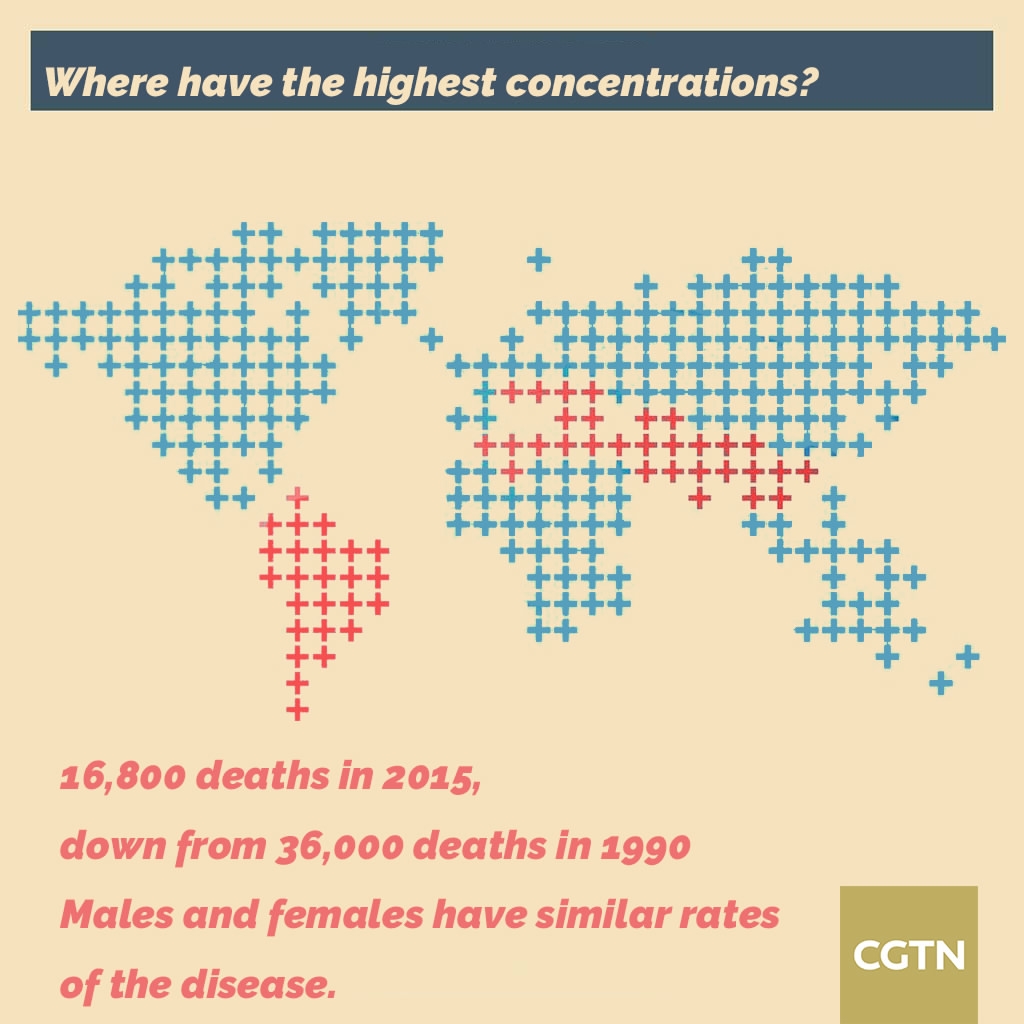
CGTN Infographic
CGTN Infographic
How to prevent thalassemia?
Since thalassemia is a genetic disorder inherited from parents, a test is recommended for all women who are expecting to get pregnant.
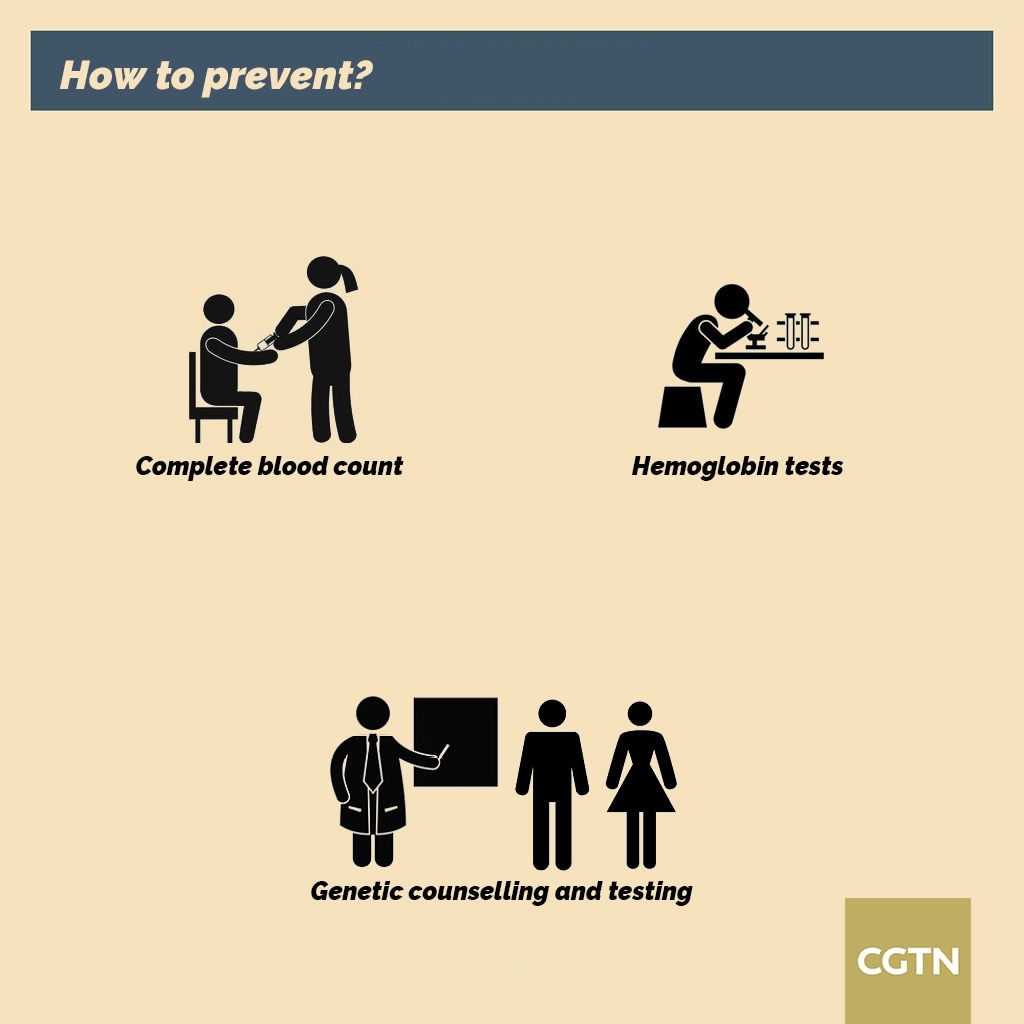
CGTN Infographic
CGTN Infographic
What are the available treatments?
People with severe thalassemia require medical treatment. Bone marrow transplants may offer the possibility of a cure in young people with matched donors. Success rates vary from 70 to 90 percent.
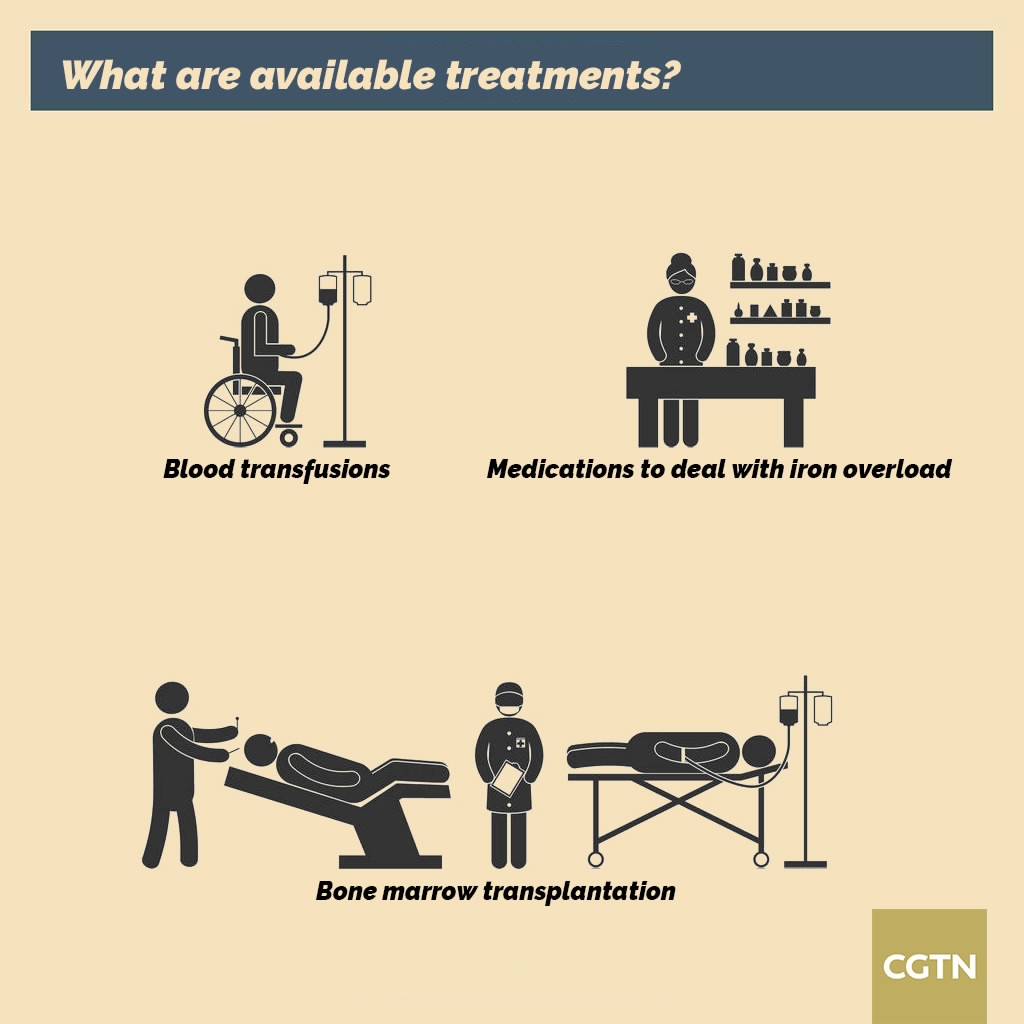
CGTN Infographic
CGTN Infographic
Every year on ITD, communities across the world have special activities to raise social awareness of this group of people.
On Monday in Chengdu City, southwest China’s Sichuan Province, a campaign aimed to relieve poverty caused by thalassemia was held.
As outlined by ITD 2018’s theme of “Thalassaemia past, present and future: Documenting progress and patients’ needs worldwide,” only when we care about the past and present of the disease, can we do more in the future.
[Infographics designed by Fu Lei; Top image via Thalassaemia International Federation website]

SITEMAP
Copyright © 2018 CGTN. Beijing ICP prepared NO.16065310-3
Copyright © 2018 CGTN. Beijing ICP prepared NO.16065310-3